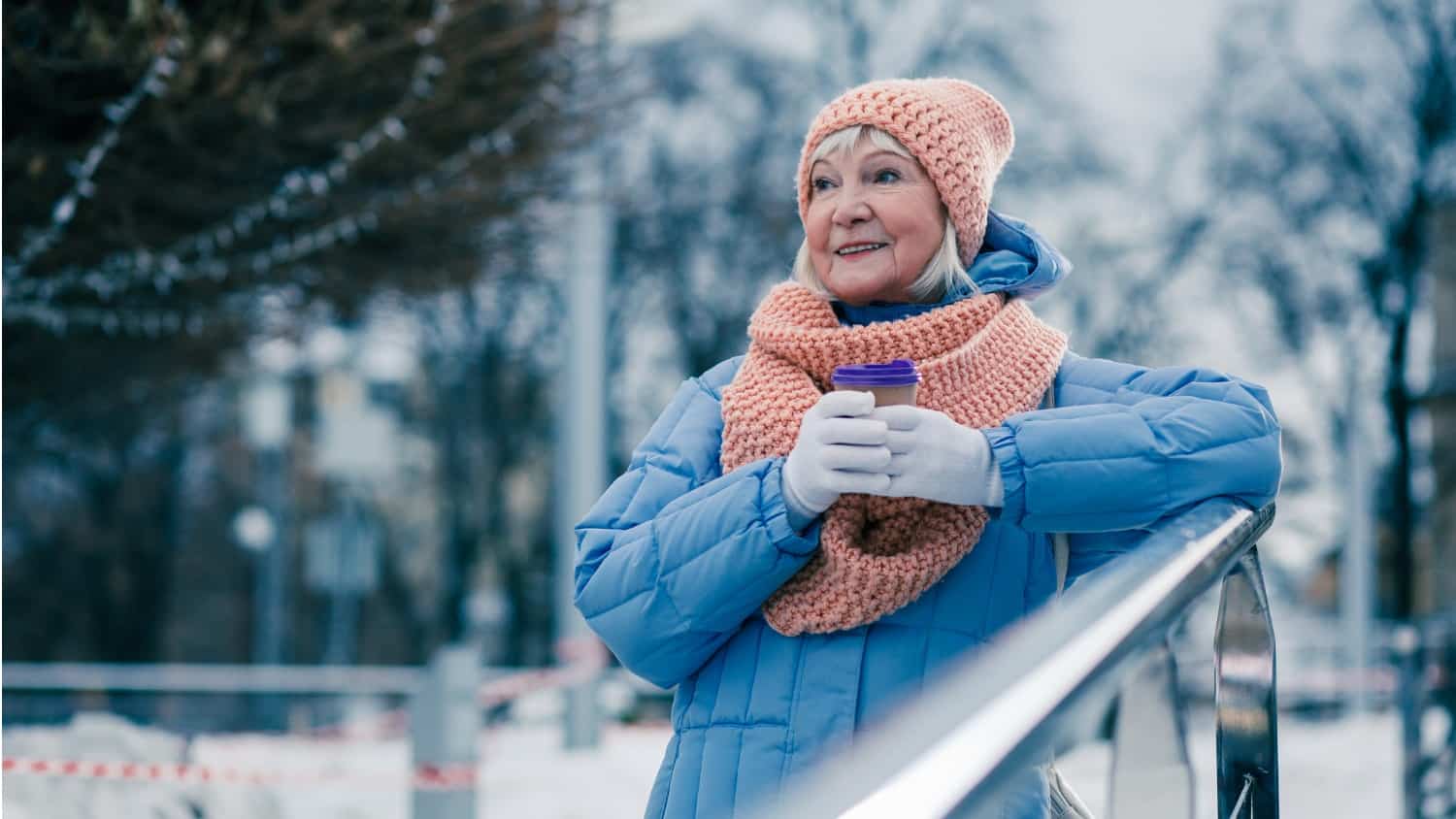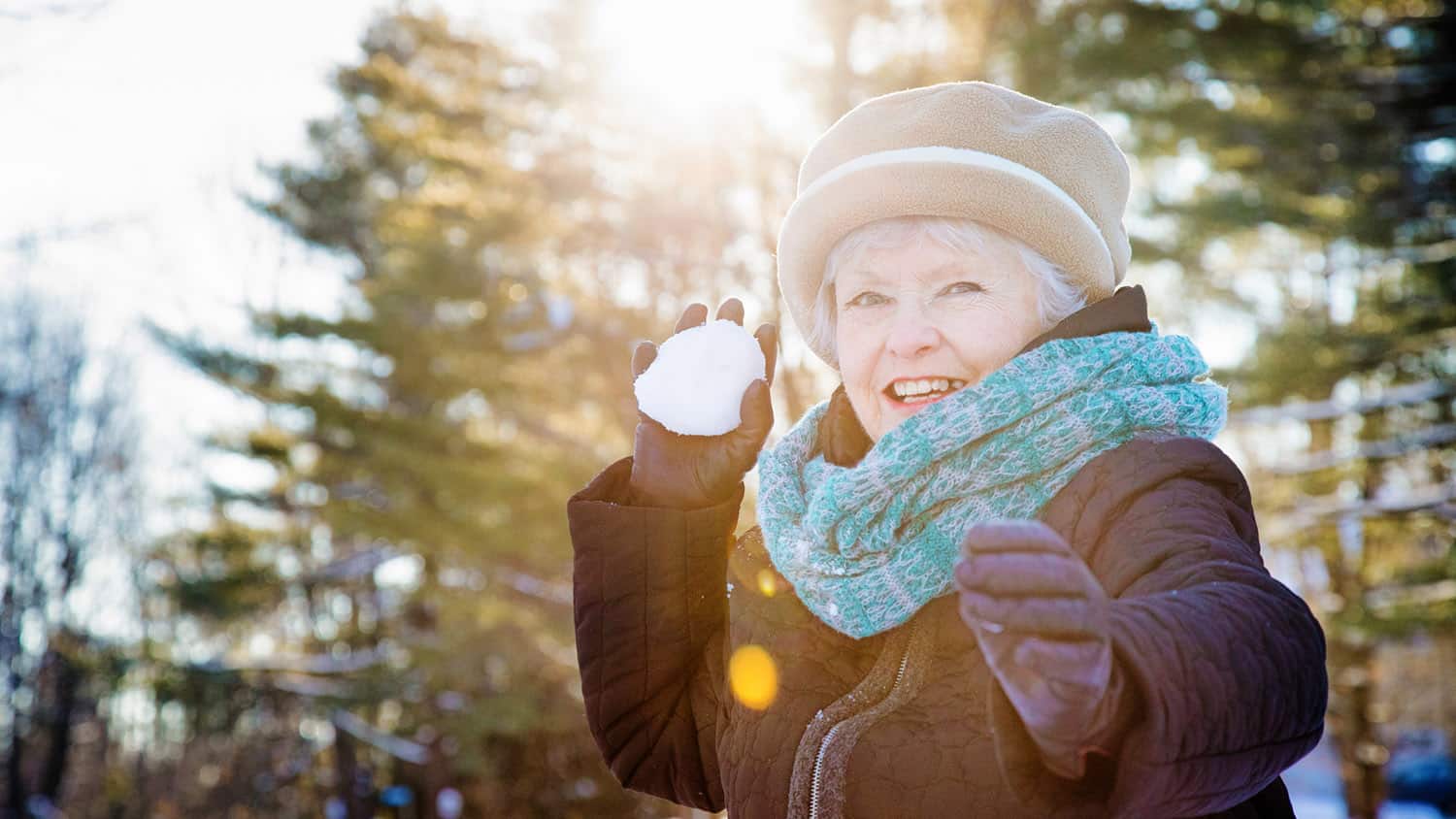
How to Keep Yourself Healthy (and Warm) This Winter
While there’s plenty to love about winter – skiing, ice fishing, fireplaces, warm sweaters, the first snowfall – there’s a lot more to worry about, especially for those who are over 65. When battling the elements, it certainly pays to be cautious.
Cold weather can exacerbate breathing issues and the risk of slipping and breaking a bone is very high due to slippery conditions. Even shoveling your driveway can carry substantial risk as thousands of people of all ages are sent to the ER every year due to snow-shoveling injuries.
On top of all that, there’s also the risk of developing hypothermia, which is especially high amongst senior citizens. Luckily, there are ways you can mitigate your risks.
Try to Avoid Slips
This might sound obvious, but avoiding slips is definitely harder than it sounds. Quite often, snow can cover up a dangerous patch of ice underneath it. Even snow can be very slippery, especially if you don’t have appropriate footwear. So, what can you do to avoid slipping?
Pay Attention
You should be alert in all seasons, but it’s especially important in the winter. Put away the phone and keep an eye out for potential ice patches on the sidewalk or parking lot.
Be especially wary of patches that look wet when the rest of the area is covered with snow – they could easily be black ice.
Wear the Right Shoes
The shoes you wear can make winter a breeze or a pain. When choosing the right pair, find ones that fit you comfortably, are waterproof, and provide good traction. For additional help, you can get some pull on studs to help you traverse the winter wonderland.
Winterproof Your Walking Accessories
If you use a cane or walker, you’ll want to make sure you winterize those as well. That might mean changing out the heads for newer ones that have a retractable ice tip. For walkers with wheels, you can generally spray some ‘liquid snow chains’ such as Snow Grip to provide additional traction.
Improve Your Strength and Flexibility
You’ll be less likely to slip if you have a good sense of balance and stable core. The good news is that you don’t have to spend a lot of money at the gym or on a home gym. There are dozens of safe exercises you can do with just a chair and mat.
Layer Up
Cold temperatures can lead to frostbite or hypothermia. Sadly, more than 50 percent of hypothermia related deaths are of people 65 and over.
It might be tempting to try and save yourself some extra dollars at home by keeping your house cold, but it’s better to just keep your house at a reasonable temperature, especially if you live in an area that drops in the negatives.
Once you’re outside, make sure to wear layers. It might be tempting to wear just one heavy jacket, but layers mean you can more easily regulate your body temperature.
Of course, you’ll also want to wear essentials like a hat, gloves, scarf, and warm socks. If it gets very cold, make sure you cover all exposed skin and use a scarf to cover your mouth in order to protect your lungs.
Be Social
It’s all too easy to stay inside on cold days but fight against the natural urge to curl up under some blankets. Wintertime often leads to increased isolation for senior citizens. Combine that with Seasonal Affective Disorder (SAD) and you have a recipe for depression.
To combat this, it’s important that you take the time to get outside your house and find social activities.
Many towns and cities have events specifically geared towards senior citizens, whether that’s ballroom dancing or bingo. If you have family nearby, try and visit them a couple of times a month (if possible) during these cold months. You’ll be happier and healthier for it!
Get Your Vitamin D
Winters mean shorter and cloudier days. The lack of sun also means less Vitamin D, which can lead to a slew of issues including depression, fatigue, weakened immune system, and more. As you’d expect, all of this can be deadly in the wintertime as many colds and flus circulate during the colder months.
Your body can produce vitamin D by itself, but it requires sunlight. Since there’s not as much sun during winter months, you’ll have to supplement your body’s natural production with foods and vitamins. Surprisingly, there aren’t that many foods that naturally contain vitamin D.
The best sources are fatty fish such as salmon, tuna, and mackerel. You can also get it from fortified foods such as milk, some brands of orange juice, yogurt, and plant milk alternatives. Of course, if you’re not into fortified food, you can also take a supplement.
Winter comes with its own set of challenges for everyone, but it’s especially important for senior citizens to be vigilant. With a bit of planning and awareness, you can stay healthy and happy until spring rolls around.
What are some other ways you prepare for the winter? We’d love to hear your thoughts! Let’s move the conversation to the comments below!
Tags Healthy Aging






